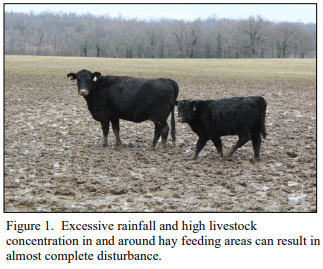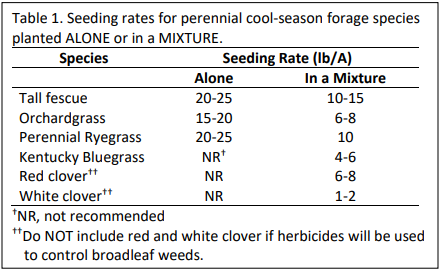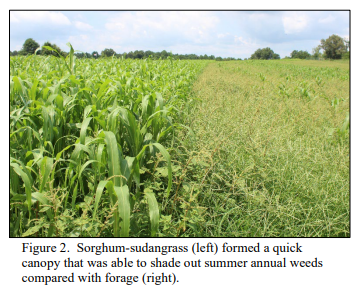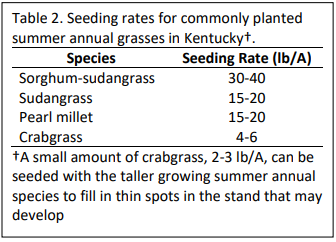 As I am writing this, we just finished the last of the Spring value-added sales that we at the Kentucky Beef Network help support. These sales include the Kentucky Certified Hereford Influence Sale, the Charolais Influenced Feeder Calf Alliance Sale and the Profit Thru Performance Feeder Calf sale. To put your calves into a sale like this is a great opportunity to help add more value to your calf crop and increase your sale profits. Reading this, you may wonder what “value-added” means. Value-added applies to ways a producer markets their cattle to make them stand out from other animals. There are numerous ways to go about adding more value to calves that you intend to sale. This can include incorporating basic management practices like weaning, castration and testing for BVD. That is exactly what the sales mentioned above are doing. They have created an outline of basic management processes that consignors must follow to have their cattle qualify for these sales. These practices help cattle in these sales standout from others as it reduces the workload the buyer has to do to get these animals to the next step on their journey. Thus, sellers are rewarded for their additional work. It also creates an opportunity for producers to combine their like cattle and sell them as load lots, which also increases your profits. The sales mentioned above use a mix of practices that help increase the return on the investment on the animals sold. With some planning and effort, most producers can easily incorporate some of these things into their livestock development program and capture those additional returns. To start, these sales have a set vaccination and worming protocol in place. This protocol can include vaccinating for things such as IBR, BVD and blackleg. Some other great management practices include castrating your bull calves and weaning all calves before sale time. Castrating your bull calves can instantly add more value to the calf in question. It can be incorporated into to the management protocols you are already doing on your operation. However, it may mean adjusting your cattle working schedule to catch the calf when it is still young or you may choose to castrate when you get all of your animals up to work them. Weaning your calves before the sale helps them have time to adjust to being away from their mother, which keeps them calmer at the sale barn. It also keeps them in better health with less chances of getting sick when they are sold. Another value-added practice is to work with your local veterinarian to pregnancy check the heifer calves you intend to sale. You can gain additional value by guaranteeing that those heifers are open. Overall, using these “value-added” practices can help to create more profitable marketing opportunities. When you do any of these practices, be sure that potential buyers know about them prior to the sale by including it in any description of the animals, making a note of it when you arrive at the stockyards or by placing your calves in a value-added sale with other producers. Remember you cannot be rewarded for extra work if the buyers don’t know about it.
0 Comments
To raise an animal with respect means to care for an animal’s safety, care, and health. The Raised with Respect BQCA training put all of this together and gave attendees the opportunity to put what they learned into practice plus a bit more. The purpose of the day was to give a well-rounded experience that helped to show that how a farmer treats their animal matters and can have a lasting affect all the way to the plate that someone eats off of.
The day began with some opening comments and then we hopped right into a panel focused on the importance of beef quality. Attendees were able to ask the panel members any questions pertaining to why cattle handling and care mattered all the way from the pasture to the plate. The panel was made up of Chef Josh Moore from Volare Italian Ristorante, Chef Zach Wolf from Steak and Bourbon, Carey Brown of the Kentucky Beef Council and moderated by Kirsten Nickles from Certified Angus Beef. Beef quality matters for a lot of reasons; everybody wants a higher quality beef that also has a great look. The Chefs talked about why beef quality matters to them and how they themselves take pride in serving higher quality meats and how they appreciate the work that a farmer does to produce the meats we eat. Next, attendees went through rotations that covered a wide variety of topics. Outside in the cattle handling facility Kevin Laurent from the University of Kentucky and Ben Lloyd of the Kentucky Beef Network guided attendees through a BQCA chute side training and cattle handling demonstration. This included how to safely and carefully move cattle and work them into a chute, where and how to safely give vaccinations, and all of the biosecurity that goes into working cattle. The next rotation was with Dr. Darrh Bullock and Dr. Katie VanValin from the University of Kentucky going over management practices for cattle care. Some of these practices included managing your cattle’s body condition scores so that they do not become too thin or too overweight, and using EPDs (Expected Progeny Differences) to guide your cattle herd towards a direction that is best for the animal’s care and for the producer as well. The last of the rotations was with Dr. Michelle Arnold with the University of Kentucky where she led a group about Spring vaccination protocols. This presentation gave attendees the opportunity to see the many options there are when it comes vaccinating their cow herd. To begin the end of the day everyone headed back to the main room where they did their BQCA exams to receive their certifications while also enjoying some great appetizers from chef Josh Moore and Zach Wolf. After everyone had finished their exams, we then were given the amazing opportunity to eat a delicious meal that chef Josh and Chef Zach had made. To round out the night Paul Dykstra from Certified Angus Beef brought a market update that compared past to current prices and where the market was headed. Overall, this was a great opportunity to get your BQCA Certification, hear some great talks from professionals, and enjoy a wonderful meal. A big thanks goes out to all the attendees, the speakers, Chefs Josh and Zach, and especially to Certified Angus Beef and Sysco. Spring Calving Cow Herd
|
Eden Shale Farm |
University of Kentucky |
University of Kentucky |
University of Kentucky |
Author
Keep up with KBN News here.
Archives
June 2024
May 2024
April 2024
March 2024
February 2024
January 2024
December 2023
November 2023
October 2023
September 2023









 RSS Feed
RSS Feed